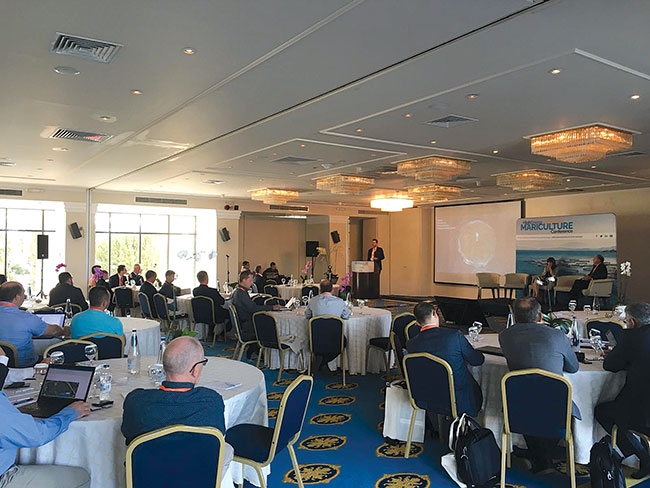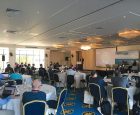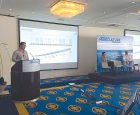
News & Views
Hatcheries high on offshore farming conference agenda
Hatcheries came under the spotlight at the High Energy Mariculture Europe 2018 held in Corfu, Greece last fall.
February 8, 2019 By Bonnie Waycott
 Hosted by Mercator Media in the U.K.
Hosted by Mercator Media in the U.K.Christos Palaiokostas, associate senior lecturer in aquaculture selective breeding at the Swedish University of Agricultural Sciences, discussed breeding in farmed fish using genotyping by sequencing. Antonio Coli, head of Group Hatcheries at Selonda Aquaculture SA, looked at how Selonda’s hatcheries have become market leaders and the benefits of growing fry in-house, while Patrick Lavens, with the strategy execution and business growth at INVE Aquaculture by Benchmark, offered some solutions for ensuring hatchery and fingerling health.
Delegates agreed on the importance of hatcheries in supplying ready, quality fingerlings to farms.
“The quality of fry prevails because it affects farm performance, survival and overall growth rate,” said Lavens. “In hatcheries we need to see how we can further improve on it and ensure economic sustainability.”
Lavens introduced rapid pathogen detection diagnostic tools, such as PCR applications, and laboratory level tools, like gene expression analysis and molecular markers, to guarantee quality. INVE Aquaculture also enriches live feed and adds immuno-stimulants to enrichment diets to increase fish biomass, robustness and higher resilience.
Lavens presented a range of experiments at INVE, in which live food is substituted with artificial diets, resulting in lower deformity levels and increased biomass at the end of the hatchery cycle. Three different nursery diets were also used in Greece to assess fish performance in cages, resulting in a significant increase in growth performance.
Other elements that were featured in the hatchery session was an overview of Greece’s Selonda Aquaculture, a sea bass and sea bream producer with six hatcheries and a production capacity of 170 million fry. After highlighting the main pillars of Selonda’s hatchery sector – organization, management, human resources support, infrastructure, and technology – Selonda’s Antonio Coli explained why he thinks growing fry in-house leads to strong, robust fry.
“It’s easy to establish and maintain solid links with our on-growing facilities as these are nearby, while strong IT infrastructure allows us to monitor and analyse our fry properly. We also have full control over fry production costs, guaranteeing availability to support stocking plans and supplying to the fry market. These optimize overall results and raise company value.”
Selonda is currently improving the genetic basis of its fry through genomics and marker-assisted selection. Smart selection programs are being expanded to new species, with facilities dedicated to this purpose.
Also incorporated during the session was selective breeding by Christos Palaiokostas of the Swedish University of Agricultural Sciences. Aquaculture is still new so vaccines don’t exist for every disease and species, while there is also a more direct environmental impact. Palaiokostas sees selective breeding as an additional tool that offers that best genetic material under optimal rearing conditions. Genotyping-by-sequencing (GBS) was also introduced in identifying genetic markers for selection purposes and choosing positive traits like growth and disease resistance in fry. By gathering high quality genomic data and assembling that into a complete genome, Palaiokostas believes GBS is showing great promise as a research tool in hatcheries.
“It produces high-density, high-resolution linkage maps for organisms for which you have no genomic information available,” he explained. “It’s flexible, requires no initial investment, and the maps give us a clear idea of the genetic architecture of a particular positive trait that we might want to incorporate in fry. This is of huge value to hatchery breeding programs.”
Print this page
Advertisement
- Federal Court rules BC farmed salmon must be tested for lethal PRV virus
- Peer review concludes PRV-infected farmed salmon pose low risk to wild fish







